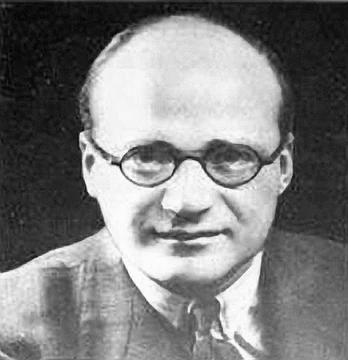LEGENDS OF
LIGHT MUSIC
Peter Yorke

Peter Yorke
conducted one of Britain’s
most popular broadcasting
orchestras from the 1940s until
the 1960s. He was also a gifted
composer and he created many
stunning arrangements that
brought out some fine
performances from the top
musicians he always employed.
He was born in
London on 4 December 1902, the
son of a printer, and he was
already an accomplished organist
by the age of 16. While still in
his teens he was appointed
choir-master and organist at a
London church, and he completed
his education at Trinity College,
London. His early musical career
found him working as a pianist in
a west London orchestra, and his
skill as an arranger was so
apparent that, within a couple of
years, he was providing scores to
most of the important bands in
London. During 1927-28 he
appeared as pianist and arranger
on British dance band 78s by
Percival Mackey, thereafter with
George Fisher (1928), Jay Whidden
(1928), Jack Hylton (1929-33),
and Henry Hall (1932-33).
With Hylton he
eventually found the continuous
travelling stressful, so for a
while he formed his own orchestra
which concentrated on providing
broadcasts for European radio
stations.
In 1936 he began a
fruitful collaboration as chief
arranger with Louis Levy, one of
the pioneers of music for British
films, who employed several
talented writers such as Clive
Richardson, Charles Williams and
Jack Beaver, but seldom gave them
any credit on-screen. (Typically
Levy never mentions Peter’s
contributions once in his 1948
book ‘Music For The
Movies’). Yorke’s
experience and skills were
ideally suited to the big, lush
sound conjured up by Louis Levy
and his Gaumont-British Orchestra
on their many recordings and
broadcasts.
Peter Yorke joined
the Royal Air Force in 1940, and
within six months he was
transferred to the Broadcasting
Section of the three services.
Demobilised in 1946, he returned
to composing and arranging, and
formed his own large Concert
Orchestra, which built upon the
symphonic sound he had developed
before the war under Louis Levy.
‘Sweet
Serenade’, ‘Our Kind of
Music’ and ‘The Peter
Yorke Melody Hour’ became
popular on BBC radio, allowing
listeners to enjoy sophisticated
versions of popular tunes of the
day, alongside some of his own
pieces of light music. He was a
prolific writer, with his
compositions accepted by many
publishers including Chappells,
Francis Day & Hunter,
Bosworth, Harmonic, Conroy,
Paxton, Southern and Josef
Weinberger.
Peter Yorke’s
notable pieces include
"Sapphires And Sables",
"Melody Of The Stars",
"Quiet Countryside",
"Caravan Romance",
"Carminetta",
"Faded Lilac",
"Fireflies",
"Flyaway Fiddles",
"Golden Melody",
"Oriental Bazaar",
"In My Garden" - suite,
"Midnight In Mexico",
"Parade Of The
Matadors", "Royal
Mile", "Highdays And
Holidays", "Brandy
Snaps", "Miss In
Mink", "Lazy
Piano", and "Ladies
Night".
Another notable
Peter Yorke composition is Dawn
Fantasy. It is largely forgotten
today, but achieved considerable
popularity during the era when
Warsaw Concerto spawned a glut of
similar works which broadcaster
Steve Race astutely dubbed
‘the Denham concertos’,
because it seemed that most films
emanating from that once-prolific
British studio had a full-blown
piano pseudo-concerto on the
soundtrack.
He chose his own
Sapphires and Sables as his main
theme, although he often also
used Melody of the Stars.
Possibly his best-known work was
Silks and Satins which, for ten
years from 1957, was heard on
British television several nights
each week as the closing theme
for the popular soap-opera
‘Emergency Ward 10’.
For his broadcasts
and records, the Peter Yorke
Concert Orchestra usually
comprised between 30 to 40
musicians, and leading the saxes
was a talented player called
Freddy Gardner. He could reach
notes on the saxophone which
didn’t exist as far as other
players were concerned, and his
golden tone can be heard soaring
above the strings and brass on
many recordings that are highly
prized by collectors. It is not
fanciful to suggest that I Only
Have Eyes For You is one of the
top ten orchestral 78s of all
time, with a superlative
arrangement matched by supreme
playing from the entire ensemble
– with the added bonus of
what can only be described as a
virtuoso performance by Gardner
at the peak of his charmed
career. This was recorded at
EMI’s Abbey Road studios on
29 April 1948, just two years
before his sudden death from a
brain haemorrhage on 26 July 1950
at the early age of 39.
Mention should
also be made of the 1940s radio
series "ITMA" featuring
comedian Tommy Handley, because
one of the musical interludes
performed by the orchestra under
the baton of Charles Shadwell
often featured a specially
commissioned arrangement of a
popular novelty. Peter Yorke was
a frequent contributor, and his
inventive creations included
Humpty Dumpty and Baa Baa Black
Sheep.
Peter Yorke died
aged 63 on 2 February 1966 when
his shows were still a popular
part of the Light Programme
schedules, and one suspects that
people will still enjoy his
tuneful music for decades to
come.
David Ades (August
2003)
Peter Yorke CDs
which deserve to be in your
collection:
"MELODY OF
THE STARS" Living Era
CDAJA5501
"GLAMOROUS NIGHTS"
Vocalion CDEA6005
"FREDDY GARDNER" Naxos
8120506 [14 tracks with Peter
Yorke]
"FREDDY GARDNER" Living
Era CDAJA5454 [7 tracks with
Peter Yorke]
|